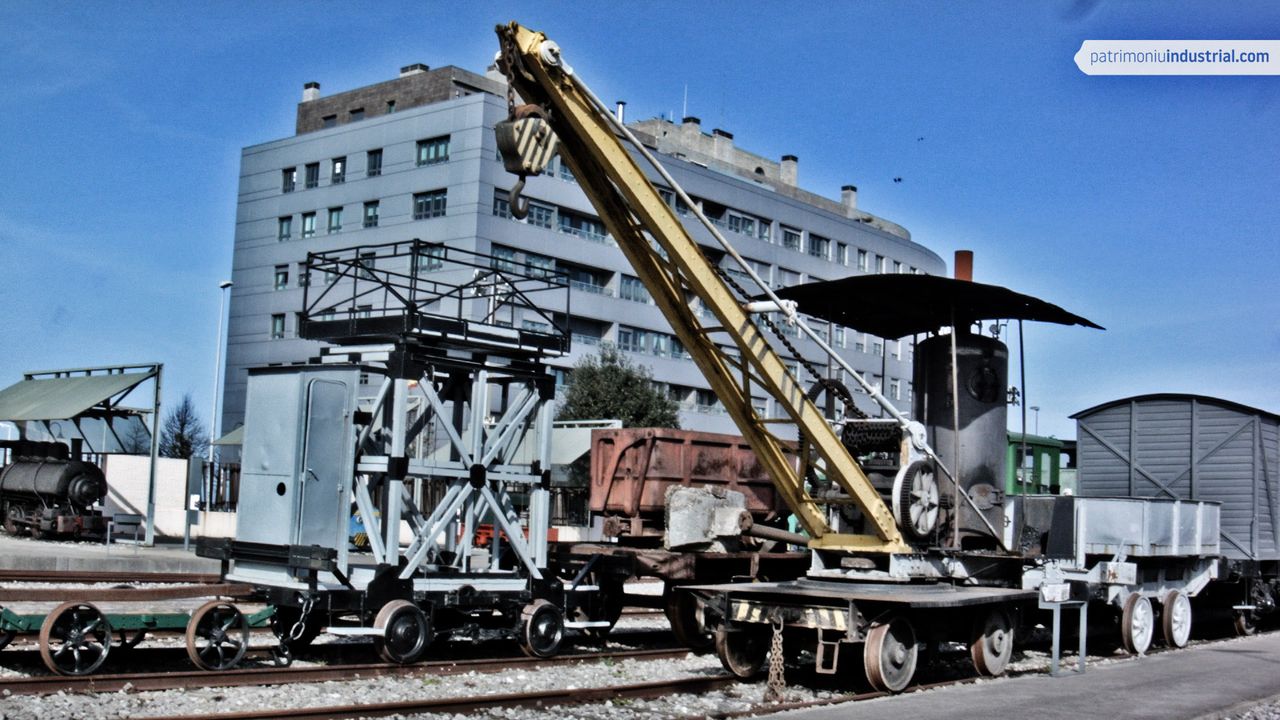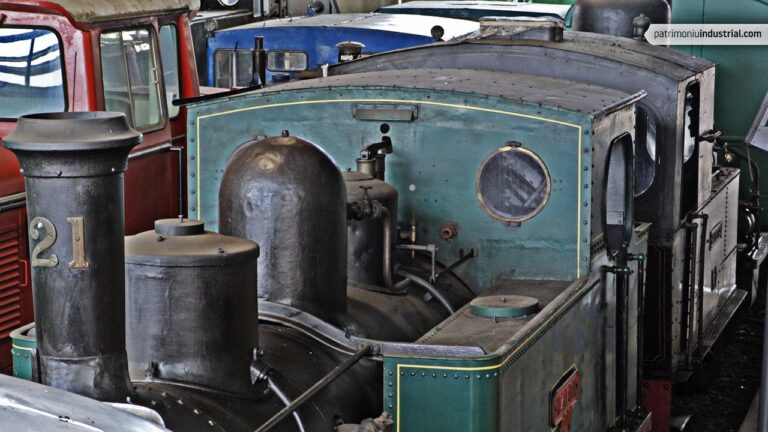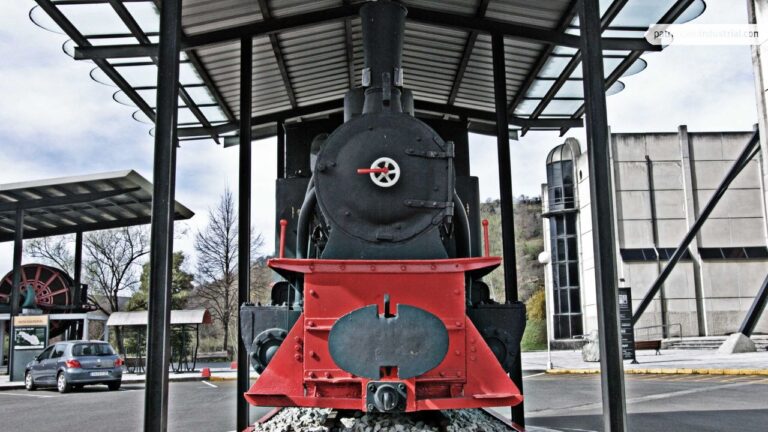Transport
Although self-propelled railway cranes were not particularly abundant, there are still three examples in Asturias, all of them broad gauge. In addition to the "Leona", which belongs to the collection of the Iron and Steel Museum, the Asturias Railway Museum holds the other two. One of them comes from the Port of Gijón and was built by the English firm Grafton. The other one, even more interesting, was owned by the Trubia Weapons Factory, where it was built around 1890 using some British parts.
Its structure is typical of this type of vehicle: it consists of a frame with two axles on which a platform rotates. It houses the cabin, the gears that facilitate its manoeuvring and, at one end, the vertical boiler, which serves as a counterweight. It has a fixed boom with a movable hook at its end. The entire platform is protected by an open canopy. It can move by itself thanks to a chain drivetrain.
Regarding its use, it was used in the cannon proving ground, where it was in charge of manoeuvring, together with another similar vehicle, the portal frame from which some of the guns that were tested hung. It was also used to move heavy parts in other areas of the factory.
The Ministry of Defence gave it together with the rest of the historical railway vehicles of the Trubia establishment to the Asturias Railway Museum. Later, it was restored and switched on on the occasion of the Jornadas del vapor (Steam Days) of the institution. Its heritage value is relevant from several points of view: it is the oldest crane of this type in service in Spain (there is only another one in operation in the Basque Country) and also the oldest self-propelled vehicle in running order preserved which was built in Asturias. Its peculiar silhouette is a reminder of the wide variety of machinery present in the factories during the Industrial Revolution, most of which have now disappeared.
PHOTO GALLERY






Recent Comments